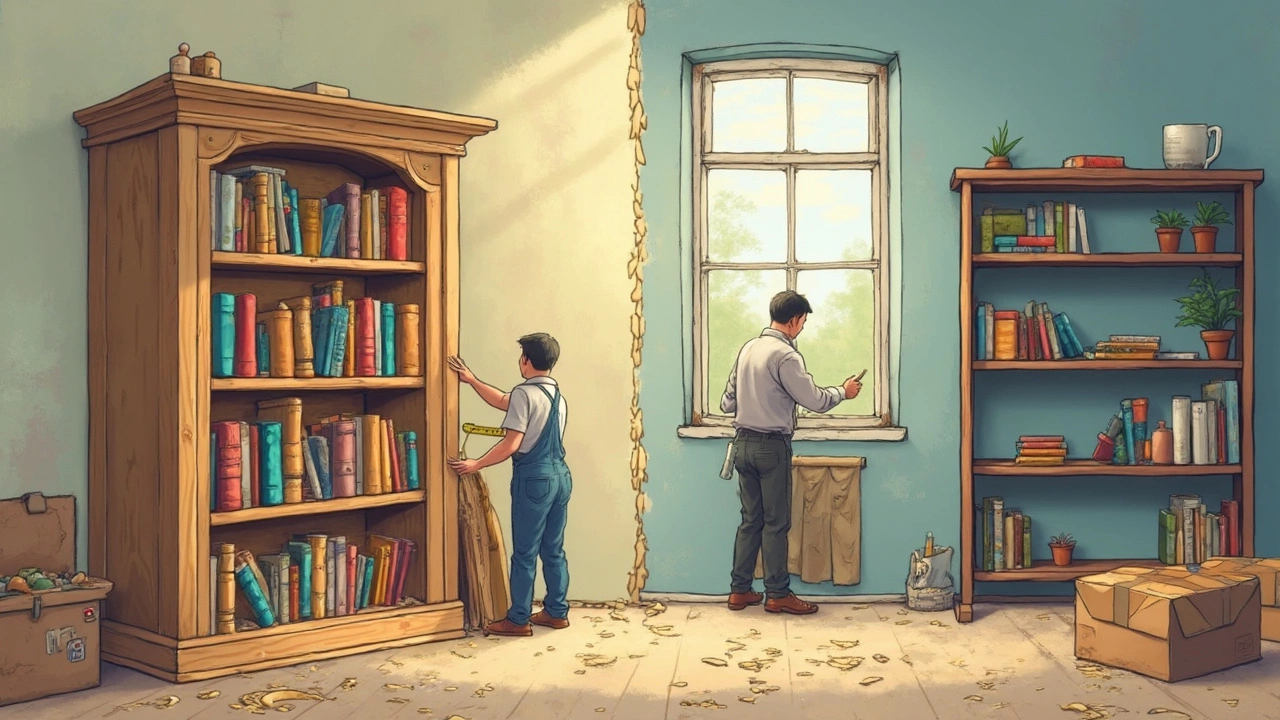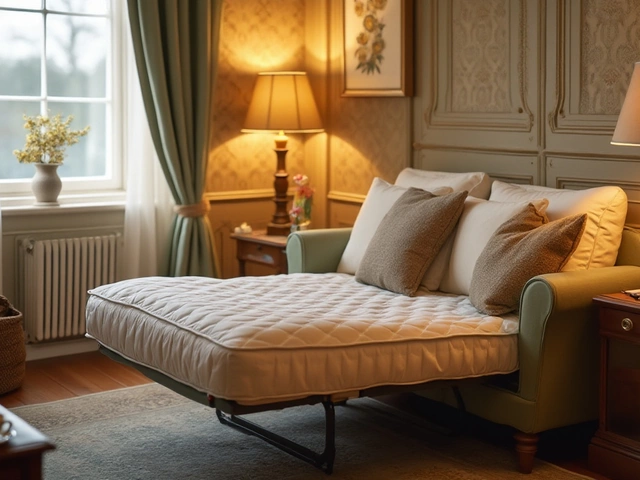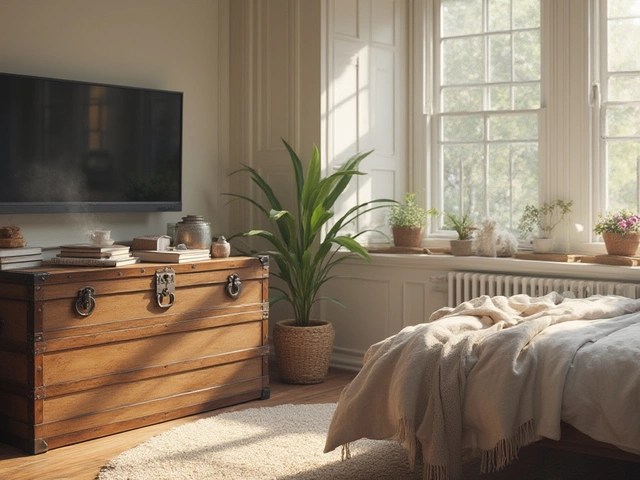Ever get sticker shock looking at bookshelves online? Yeah, me too. The prices can go from cheap and flimsy to designer-level expensive in a heartbeat. But here's the thing—could you actually save money by building one yourself? Or is the hassle not worth it?
Right off the bat, it’s not as straightforward as adding up the wood and calling it a win. There are materials, tools, and time to think about. Mess up a cut, and you might be running back to the hardware store the same day. On the flip side, some ready-made shelves look nice, but they wobble like a drunk flamingo after six months. Nobody wants that.
If you’re weighing your options, you want real numbers, real pros and cons, and honest advice—not just Pinterest dreams or marketing talk. Let’s start with what you’ll actually spend, where shoppers and DIY folks often get caught out, and how to avoid turning your weekend project into a money pit.
- Comparing Costs: DIY vs Store-Bought
- Breaking Down Material Expenses
- The Tools and Skills You'll Need
- Time vs Convenience Factor
- Hidden Costs and Surprises
- Tips for Saving Money Either Way
Comparing Costs: DIY vs Store-Bought
If you want a bookshelf but don’t love the price tags, you’re not alone. On average, a brand-new bookshelf from IKEA or Target goes for $50 to $130 for basic options and up to $400 for solid wood. That’s not even touching the designer stuff—those can easily hit four digits. But do you actually save anything by building?
Let’s get real about the costs. When you buy from a store, you’re paying for more than just materials. You’re also covering labor, shipping, marketing, and a chunk for store profit. Sure, it’s convenient—just unpack and you’re done. But you might trade off quality for price, especially with particleboard models. These affordable shelves can sag under a heavy book load in just a year or two.
DIY isn’t always the cheapest route up front. If you have no tools, that first trip to the hardware store can sting. Plywood or pine boards, screws, brackets, and stain or paint add up. A no-frills, homemade shelf (medium size, real wood) usually runs $50 to $120 in materials. If you want fancy details or extra-strong shelves, costs can rise fast, especially if you mess up and have to buy more lumber. And if you need to buy a drill or saw, tack on another $40-$150.
| Option | Average Price Range (Material Only) | Quality |
|---|---|---|
| DIY Bookshelf | $50–$120 | Usually better for same price |
| Store-Bought | $50–$400+ | Varies, cheaper = lower quality |
One more thing—DIY lets you avoid surprise “assembly fees” or high delivery costs that stores sometimes sneak in. Plus, you set the shelf height and width to fit your stuff, not just what’s in stock.
If you already have tools lying around and don’t mind spending a weekend working, DIY can get you sturdier results for less. But if you value your time at all, or can’t be bothered with measuring and drilling, that higher store price might actually be worth every penny.
Breaking Down Material Expenses
If you’re thinking of making your own bookshelf, let’s get honest about what it’s going to cost. Wood isn’t cheap—especially if you want something sturdy. Right now, a sheet of basic plywood (enough for a small or mid-sized shelf) can cost anywhere from $30 to $70, depending on whether it’s pine, oak, or something fancier. Need solid boards instead of plywood? Prices jump fast. Single planks of nice hardwood can be $8–$20 each, and you’ll probably need at least four to six, bare minimum.
But wood is only step one. You’ll also need:
- Screws or nails ($3–$8 a box depending on quality)
- Wood glue ($5–$10 per bottle)
- Paint, stain, or varnish if you want it to look good ($10–$25 per can)
- Sandpaper or sanding blocks ($4–$7 for a pack)
- L-brackets or shelf supports for added stability ($4–$15 for a set)
It all adds up. Here’s a quick look at the numbers for a DIY mid-size bookshelf:
| Item | Estimated Cost ($) |
|---|---|
| Plywood or Solid Wood | 30–120 |
| Screws/Nails | 3–8 |
| Glue | 5–10 |
| Paint/Stain | 10–25 |
| Sandpaper | 4–7 |
| Brackets | 4–15 |
| Total (DIY Bookshelf) | 56–185 |
Now, compare that to what you get at places like IKEA, Target, or Walmart. Flat-pack bookcases start as low as $40 (for really basic models), but quickly go up to $100 or more for sturdy, bigger ones. Of course, what you save in cash, you sometimes pay for in wobbly legs or particleboard that doesn’t stand up to much weight.
Bottom line: those material expenses are real. Unless you already have spare wood and basic supplies, the gap between making and buying isn’t always as big as it looks. And let’s not forget, a bookshelf built by hand can have more personality—but the price tag is no guarantee it’ll be a deal.
The Tools and Skills You'll Need
So, you want to build your own bookshelf? Let’s get real: you’ll need more than just a hammer and a good attitude. For a basic wooden bookcase, here’s what usually sits on the shopping list:
- Measuring tape and pencil – Obvious, but missing this step is like baking without a recipe. Measure twice, cut once.
- Circular saw or handsaw – If you don’t own one, you’ll have to borrow or buy. Even a cheaper handsaw can handle the job, but it takes more elbow grease.
- Power drill with bits – Drilling pilot holes stops your wood from splitting. Most people forget this—until their shelf cracks.
- Level – No one wants a shelf that slopes. Get things straight from the start.
- Clamps – These hold everything steady while you screw or glue it together. Two or four—more is always handy.
- Screwdriver – Cordless saves time, but a regular Phillips will get it done if you’re patient.
- Sandpaper or a sander – Rough edges don’t just look bad, they can snag books and skin.
- Wood glue and screws – Nails look fast but screws hold better for heavy books.
- Paint or stain and brushes – Unless you like the bare look, finish it for durability.
If you’re starting from zero in the tool department, costs add up—easily $70 to $120 just for basics. Renting tools can trim that down, or you might be able to borrow some from neighbors.
Let’s talk skills. If you’ve never built anything, expect a learning curve. Watching a five-minute YouTube tutorial helps, but it doesn’t always pan out like the pros say. Knowing how to measure right, drill straight, and spot-check for wobbles is key. It doesn’t require a carpentry degree, but a steady hand and patience go a long way.
The nightmare scenario? You rush through and end up with a shelf that leans or won’t fit together. If you can follow instructions, work carefully, and don’t mind a bit of frustration, you’ll get there. But if you’re more hands-off or just short on time, buying starts to look a lot more attractive.
| Tool | Average Price (USD) |
|---|---|
| Handsaw | $15 - $30 |
| Power Drill | $40 - $100 |
| Clamps (set of 2) | $20 |
| Sandpaper | $5 |
| Level | $10 |
If you already have a few tools in your garage, you’re a step ahead. But if your toolbox is empty, factor these extras into your budget before ruling out a premade option.

Time vs Convenience Factor
Let’s be honest—time is a big player here. Building your own bookshelf sounds satisfying, but it can also eat up your weekend, not to mention a few evenings if things don’t go as planned. Most first-timers spend 8-12 hours on a basic bookcase if they already have the right tools. That’s measuring, cutting, sanding, painting, and assembly. Add a couple more hours for trips to the hardware store (because there’s always at least one forgotten item).
Buying a bookshelf, though? You click a few buttons online or toss one in your cart at a store, and you’re basically done. Even flat-pack shelves like ones from IKEA can usually be put together in under an hour, no power saws required. The only wait is shipping or hauling it from your car to your living room.
There’s also the mental load. DIY means you need to pay close attention to measurements, double-check your cuts, and possibly watch a few YouTube videos if you get stuck. If your free time is precious and you’d rather be reading than building, the convenience of buying ready-made wins every time.
But it’s not all sunshine for store-bought shelves. Say you want something that fits a weird nook or matches a specific color scheme—chances are, off-the-shelf options won’t be perfect. You might pay extra or spend more time hunting for the right one.
- If you enjoy hands-on projects and can spare a weekend, crafting your own bookshelf is doable—especially with basic designs.
- If your goal is fast, hassle-free results, buying a bookshelf saves hours and possible headaches.
If you’re torn, ask yourself: Do you want something quick you can unbox and use, or are you after a custom project that’ll take time—but might save cash and make you pretty proud in the end?
Hidden Costs and Surprises
Drop into any online DIY forum and you’ll find one common thread—hidden costs catch almost everyone off guard. Let’s say you’re building a bookshelf from scratch. It’s not just about buying wood and nails. You’ll need sandpaper, paint or stain, brushes or rollers, maybe wood glue, and the right screws or brackets. If you don’t already have tools like a power drill, saw, or clamps, those can push your total bill way higher than you’d expect.
Even for folks buying a shelf, there are surprises. Some cheap shelves arrive flat-packed with hardware that’s a pain to install. Factor in delivery fees, missing or damaged parts, or the classic “allen wrench assembly rage.” Returning oversized furniture isn't free—shipping a large bookcase back can cost up to $80 depending on the retailer.
Don’t forget about time. Every hour spent hunting for the right screws or fixing a wobbly shelf is time you’re not spending reading or doing, well, anything more fun. And mistakes can cost you. A warped board or crooked cut? Back to the hardware store you go. According to Consumer Reports, "More than 40% of DIYers spend more than they expected on home projects due to unplanned trips for extra materials or repairs."
"A small mistake early in a DIY project can snowball, turning a budget build into an expensive learning experience." – Consumer Reports, 2024
Now, let’s spell out some hidden costs for each option:
- Bookshelf kits can include cheap hardware or softer wood, leading to saggy shelves over time.
- DIY builds almost always need extra sandpaper, extra paint, or another trip for the right-sized screws.
- Tools you buy may only be used once—unless you see yourself making more furniture in the future.
- Don’t forget protective gear—safety glasses and dust masks aren’t free.
- Most warranties don’t cover mistakes you make at home, and returns are a hassle for assembled furniture.
If you want a snapshot, take a look at typical extra costs people run into:
| Extra Expense | Average Cost (USD) |
|---|---|
| Wood stain/paint & supplies | $20 - $60 |
| Tools (drill, saw, clamps) | $40 - $150 |
| Assembly/delivery fees (store-bought) | $25 - $100 |
| Replacement parts | $5 - $40 |
| Returns/Restocking | $20 - $80 |
Here’s one more thing—sometimes there are building codes or apartment rules about making modifications. Few people check this before starting, but it can lead to nasty surprises or even fines if you anchor a bookshelf to the wall somewhere you're not supposed to. Plan for these surprises, and your bookshelf project will be way less stressful.
Tips for Saving Money Either Way
Whether you’re swinging a hammer or hunting for a deal online, a little planning goes a long way with bookshelves. Let’s cut through the noise and focus on real ways to keep more cash in your pocket.
- DIY bookcase makers, always check local hardware stores for leftover cutoffs. Stores often sell these as scrap wood for 50-70% less. Someone else’s leftovers could be your main shelves.
- If you’re buying, look for floor model sales or open box deals. Major retailers like IKEA and Target usually mark down display items—even for small dents or scratches. You can save up to 40% this way.
- Skip the expensive wood. Plywood or MDF works well, looks good with a coat of paint, and usually costs a lot less than solid hardwoods.
- Upcycle old furniture. An unused dresser or nightstand can turn into extra shelves. There are tons of tutorials out there showing how to pull this off with just basic tools.
- Keep your design simple. The fancier the bookshelf, the more it costs. A straightforward, boxy design is much cheaper to build—and easier to level when you’re done.
- Compare prices on hardware and fasteners. Packs of screws or brackets are often way overpriced at specialty stores. Check big box stores, dollar stores, or online bulk deals.
Here’s how some typical costs shake out, whether you’re buying or building:
| Option | Average Cost (USD) | Potential Savings (with tips) |
|---|---|---|
| DIY Basic Shelf (4 ft, painted) | $45 - $90 | As low as $25 with scrap wood |
| Buy New (flat-pack, basic) | $60 - $130 | Up to 40% off open-box/floor model |
| Repurpose Old Furniture | Often under $20 | Reuse what you have, basically free |
Don’t forget about free stuff. Check local Buy Nothing groups, Craigslist, or Facebook Marketplace. Freebies go fast, but it’s worth a quick daily scroll if you want to snag a bargain. And whatever you choose—keep your receipts. Returns, price matches, or exchanging damaged parts can make or break your budget in the end.



